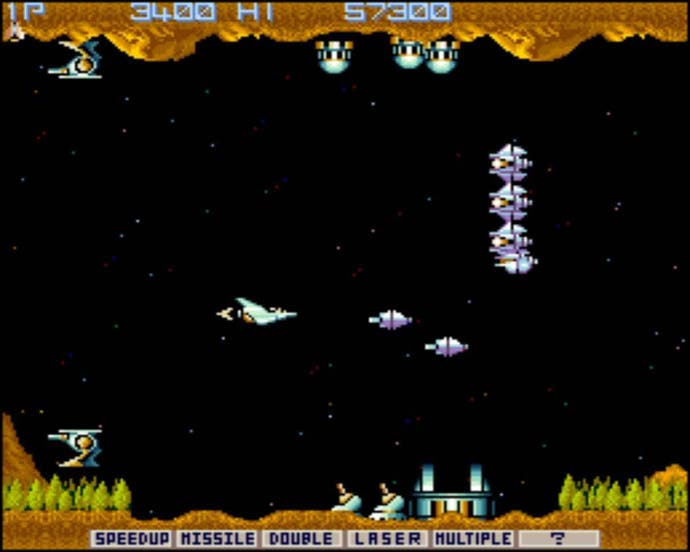Nemesis
Shoot the core!
By 1985 gaming technology had lifted shoot-‘em-ups from the one-dimensional realm of vectors and static screens into epic, full colour space adventures. Released under the (now) better known name of Gradius in its native Japan, Nemesis heralded the next generation of bright, loud and detailed shmups.
Introducing the concept of selectable weapon power-ups to the genre, Nemesis is generally acknowledged as an advanced reimagining of Scramble. Flying above the horizontally scrolling alien landscape, a variety of what would become standard fare floating enemies in artistic formation assailed the player's small, but powerful, ship. Wiping out an entire wave of drones rewarded fighter pilots with a power-up; the single most important aspect of Nemesis.
These power-ups were highly selectable, allowing players to decide not only when they were activated, but what they actually increased. A degree of strategising came into the mix once players figured out that the difficulty levels actually increased in direct proportion to the level of the ship's advancement. Activating a power-up meant waiting for the most opportune moment so as to avoid extra - and unnecessary - waves of alien marauders crashing against your fragile hull.

The end of each level was marked by weird and wonderful bosses, whose similar weaknesses (a well guarded, yet ultimately vulnerable, glowing thing at their centre) instigated the call to arms that echoed throughout the long and celebrated Gradius history: Shoot the core!
A significant benchmark in what would become the staple diet of all shoot-‘em-up games, Nemesis powered-up and broke down barriers all across the arcade.
